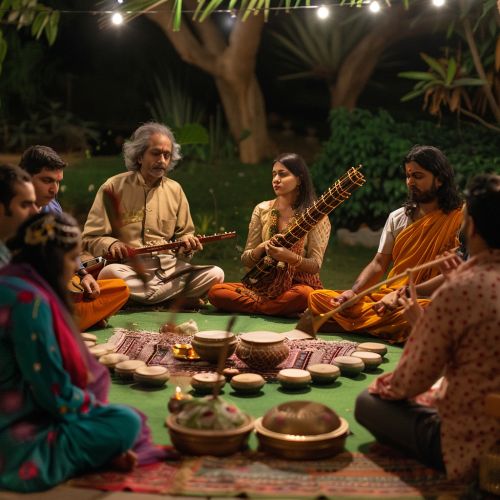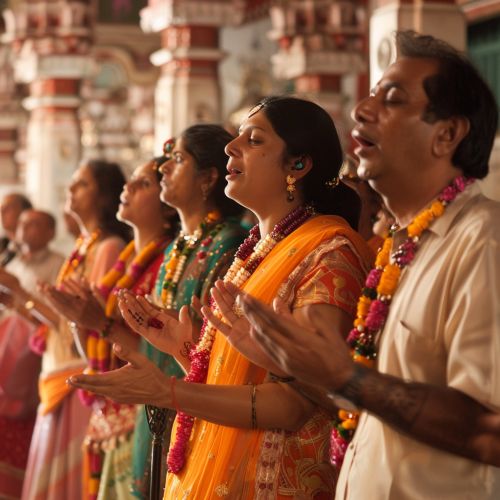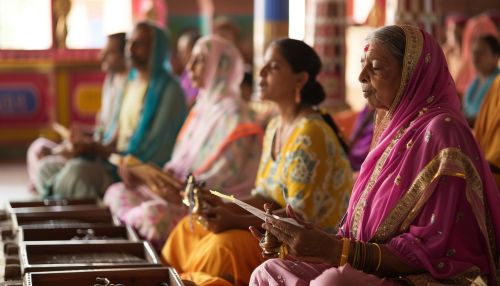Bhajan
Introduction
A Bhajan is a type of Indian devotional song, often spiritual or philosophical in nature. It is an integral part of the Indian culture and tradition, with its roots tracing back to the ancient Vedic texts. Bhajans are typically sung in groups, with one or more lead singers and the rest of the group providing the response. The lyrics of a Bhajan are usually in Hindi or other Indian languages and often revolve around the life and teachings of Hindu deities or saints.


Etymology
The term 'Bhajan' is derived from the Sanskrit word 'Bhaj', which means 'to share' or 'to partake'. It signifies the sharing or partaking of the divine love and bliss through the medium of song and music. The Bhajan is thus a means of expressing one's devotion and love towards the divine.
Historical Background
Bhajans have a rich and varied history in India, dating back to the Vedic period. The earliest Bhajans were the 'Sama' songs mentioned in the Sama Veda, one of the four Vedas of Hinduism. These songs were sung in praise of the divine and were used as a means of attaining spiritual enlightenment.
Over the centuries, the tradition of Bhajan singing evolved and diversified, absorbing influences from various religious and cultural movements. During the Bhakti and Sufi movements, Bhajans became a popular means of expressing devotion and love towards God. Saints like Kabir, Meera, and Tulsidas composed and sang Bhajans that are still sung today.
Types of Bhajans
There are several types of Bhajans, each with its unique style and theme. Some of the popular types include:
Shringar Bhajans
These Bhajans depict the divine in a romantic or amorous manner. They often describe the love-play between Krishna and Radha, symbolizing the soul's longing for union with the divine.
Bhakti Bhajans
These Bhajans express intense devotion and love towards a deity. They are often sung with deep emotion and fervor, invoking the deity's grace and blessings.
Shabad Kirtan
These are Sikh Bhajans, sung in the praise of Guru Nanak and other Sikh Gurus. They are usually set to traditional Indian ragas and are sung in Gurdwaras (Sikh temples).
Musical Structure
Bhajans are usually set to simple melodies, making them easy to sing along. They are often composed in Indian classical ragas, though folk tunes are also commonly used. The rhythm of a Bhajan is typically set by the tabla or the dholak, while the melody is carried by the harmonium or the sitar. The lead singer usually sings the verses, and the group responds with the chorus.
Cultural Significance
Bhajans play a significant role in Indian culture and spirituality. They are sung on religious occasions, festivals, and in daily worship. Bhajans are also used as a spiritual practice in itself, believed to purify the mind and heart and lead one towards spiritual enlightenment.


